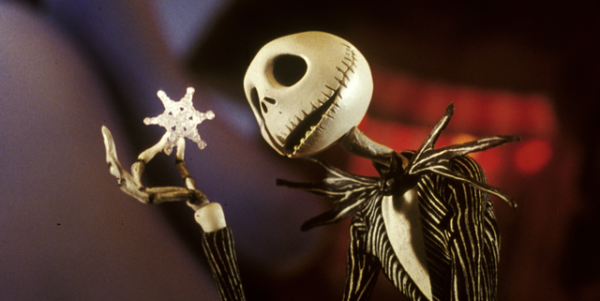Smiling Friends is Equal Parts Surreal and Stupendous
How does one review something new? What words can be used to describe something that feels entirely unique and unprecedented in the history of animation? I’m not referring to a new piece of media, I’m referring to a new kind of media. Zach Hadel and Michael Cusack’s new animated show Smiling Friends feels like nothing else on television, functioning as an unprecedented venture into unabashed surrealism. Each episode of Smiling Friends provides an absurdist spin on numerous storytelling tropes, poking fun at the nature of genre conventions and philosophy as a whole. Throughout their breakneck first season, Hadel and Cusack introduce viewers to a world that is visually inventive, side-splittingly funny, and at times disturbingly uncanny. It’s brilliant fun.
Smiling Friends is about The Smiling Friends, a small charity with the simple goal of helping their clients smile. Their two model employees are protagonists Pim and Charlie, a powerhouse comedic duo. Pim is a naive do-gooder with a rudimentary understanding of human complexity, desiring nothing more than to help people smile regardless of how unprepared he is to handle the situation. On the other hand, Charlie is much more of a realist; a lazy cynic who rarely puts forth any meaningful effort to help make the world a happier place. They work for Mr. Boss, a jovial philanthropist who may or may not be a psychopathic eldritch being.
The true joy of Smiling Friends comes from the nature of it’s setting. Pim and Charlie have a simple mission, to bring happiness and joy to the world around them. However, the world around them is a work of surrealistic lunacy. The supporting cast of Smiling Friends are all bafflingly mean-spirited individuals, deeply dysfunctional within this postmodern pastiche of madness. Those who turn to Pim and Charlie for help all juggle with real issues like depression, addiction, and self-destructive behavior. These issues are further exacerbated by the deranged debauchery that’s common within their surroundings, and that’s where the comedy of the show shines brightest.
Smiling Friends as a company has a woefully simplistic understanding of the human condition, believing that deeply seated sadness can be rectified by rudimentary problem solving. Clinically depressed? Well The Smiling Friends will just take you to the amusement park, that’ll fix everything, right? Hadel and Cusack deconstruct this mindset by simply magnifying realistic problems through an absurdist lens, creating countless laughs in the process. One episode follows Pim and Charlie as they try to help a self-destructive celebrity clean up his image, a difficult endeavor. However, the writers up the ante by making said celebrity a walking time bomb with a penchant for hysterically unpredictable violence. This use of absurdist humor perfectly illustrates how ill-equipped the Smiling Friends are when it comes to handling deep rooted psychological problems, all while being unapologetically hysterical.
Part of what makes Smiling Friends so special are the characters, serving as a perfect counterbalance to the show’s pitch black sense of humor. Pim and Charlie may be completely unprepared for the difficult nature of their job, but prove to be delightful protagonists nonetheless. Pim is never deterred by the fact that he lives in a world marked by surreal cruelty, and continues his smile-based crusade with utmost enthusiasm. Even Charlie in his lethargic cynicism never gives up on making people smile. While Hadel and Cusack love to deconstruct the simplicity within the Smiling Friends philosophy, they still present the company’s optimism in admirable light, preventing the show from becoming a shallow celebration of pessimistic nihilism.
Smiling Friends is a comedy at its core, and a gleefully effective one at that. Moving at a breakneck pace, the animation is an inventive blend of hand drawn, claymation, CGI, and even rotoscoping. The show’s unpredictable visual provides a lot of laughs, for you can never guess what creative work of insanity will pop next. Every second of this show is packed with some kind of joke, with each scene sporting a background filled with various easter eggs and silly details. Hadel and Cusack don’t slack on the dialogue either, delivering on a wide array of memorable lines. Charlie and Pim frequently engage in mundane, low-key conversations, which contrast Smiling Friend’s visual mania to hysterical effect. Further enhancing the dialogue is Hadel and Cusack’s voice acting, both who showcase brilliant comedic timing throughout the show.
Smiling Friends feels unprecedented in the field of adult animation, as well as western animation in general. The show is bitingly cynical in its satire, illustrating the genuine hardships of finding happiness with a dark sense of humor. Yet it also feels strangely endearing, presenting us with characters who are immensely likable in their desire to bring joy to others, regardless of how inept they are in doing so. Hadel and Cusack aren’t saying that people who struggle with depression are beyond help but are instead communicating that it takes a lot more than a “smile” to be happy. But we shouldn’t give up trying to help people find joy within their lives, and while the Smiling Friends may be naive, their hearts are in the right place. One rarely finds such an interesting philosophy buried within such a deeply surreal comedy, yet it’s appreciated nonetheless. Visually inventive and bizarrely thoughtful, Smiling Friends is a hilarious bright spot within the animation landscape.





